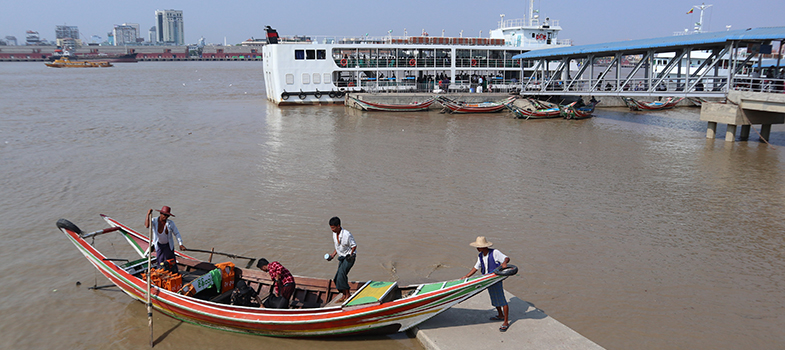3.3.1Groundwater
As you learned in Chapter 1, when rain falls it seeps into the earth, filling the cracks, crevices, and porous spaces of an aquifer, becoming groundwater. Groundwater is the least visible but most important water resource. It plays a vital role for domestic water and livestock in Myanmar and is increasingly being used for irrigation. Intensive irrigation of rice, vegetables and other high-value crops occurs through hand-dug wells. But groundwater is becoming increasingly contaminated in Myanmar as pollutants are released into the ground and make their way down to the water table.
Contaminants can enter the groundwater by seeping down directly from the surface into an unconfined aquifer, or by flowing in from another part of the aquifer, where there is a confined aquifer. Once in the aquifer they move with the groundwater flow through aquifers as a result of gravity and pressure.
Groundwater becomes contaminated in many ways, such as through poor sanitation, landfill, effluent from factories, leaking sewers, petrol and oil from vehicles or from over application of fertilizers in agriculture. As contamination moves it disperses, meaning that the concentration of pollutants decreases as it moves farther away from the source of the pollution. For that reason, there are different concentrations of contaminants at different points in the aquifer.
Using polluted groundwater is a hazard to public health by spreading disease. However, it is often safer than surface water. In Myanmar, the shift from drinking surface water to groundwater has resulted in a great reduction of water-borne pathogens and acute disease.
Question 3
a.
True
b.
False
The correct answer is a.
Feedback
The answer is true. Surface water is the water in lakes, rivers and oceans. However, when considering only freshwater sources of surface water, this excludes the oceans as that is salt water.
3.3 Sources of pollution in Myanmar
